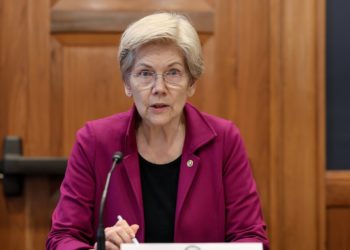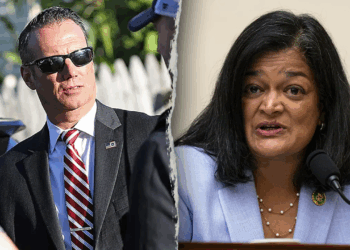175+ Democrats supporting NAACP suit against dismantling Department of Education
More than 175 Democratic members of Congress are filing an amicus brief on Thursday opposing the Trump administration’s overhaul of...
TACO Trump Backs Away From Trade Deal Deadline
President Donald Trump has acknowledged he will struggle to secure more trade deals before his 90-day pause on tariffs expires...
China shows signs of tackling the price wars that are taking a toll on its EV industry
BEIJING (AP) — The Chinese government is signaling enough is enough when it comes to the fierce competition in the...
ICE director says progressive Dem should apologize to voters after calling agency a ‘terrorist force’
NEWYou can now listen to Fox News articles! Acting ICE Director Todd Lyons is calling out the hypocrisy of progressive...
Cigar-Smoking Republican Not Remotely Concerned About Americans Losing Healthcare
As millions stand to lose access to Medicaid under Donald Trump’s massive spending bill, Rep. Troy Nehls enjoyed a cigar...
North Korean crosses the heavily fortified border to South Korea
SEOUL, South Korea (AP) — An unidentified North Korean man crossed the heavily fortified land border separating the two Koreas...
Mom, holding infant, monitors 12-year-old she let move the car. Car hits her, she drops the baby
A test drive in Victorville resulted in injury and potential criminal charges for a mom who allowed her 12-year-old child...
Dem Rep. Crow: My Constituents Fear They Won’t ‘Survive’ Trump Budget Bill
Representative Jason Crow (D-CO) said Thursday on CNN’s “The Situation Room” that his constituents were fearing for their survival after...
‘La Cocina’, ‘Sujo’ y ‘Pedro Páramo’ son nominados al Ariel
CIUDAD DE MÉXICO (AP) — Los filmes “La Cocina”, “Sujo” y “Pedro Páramo” fueron nominados el miércoles a la 67ª...
What Trump’s ‘big, beautiful bill’ means for Alabama farmers
MONTGOMERY, Ala. (WHNT) — Alabama’s farmers said a reconciliation bill passed by Congress today would be a major win for...

















